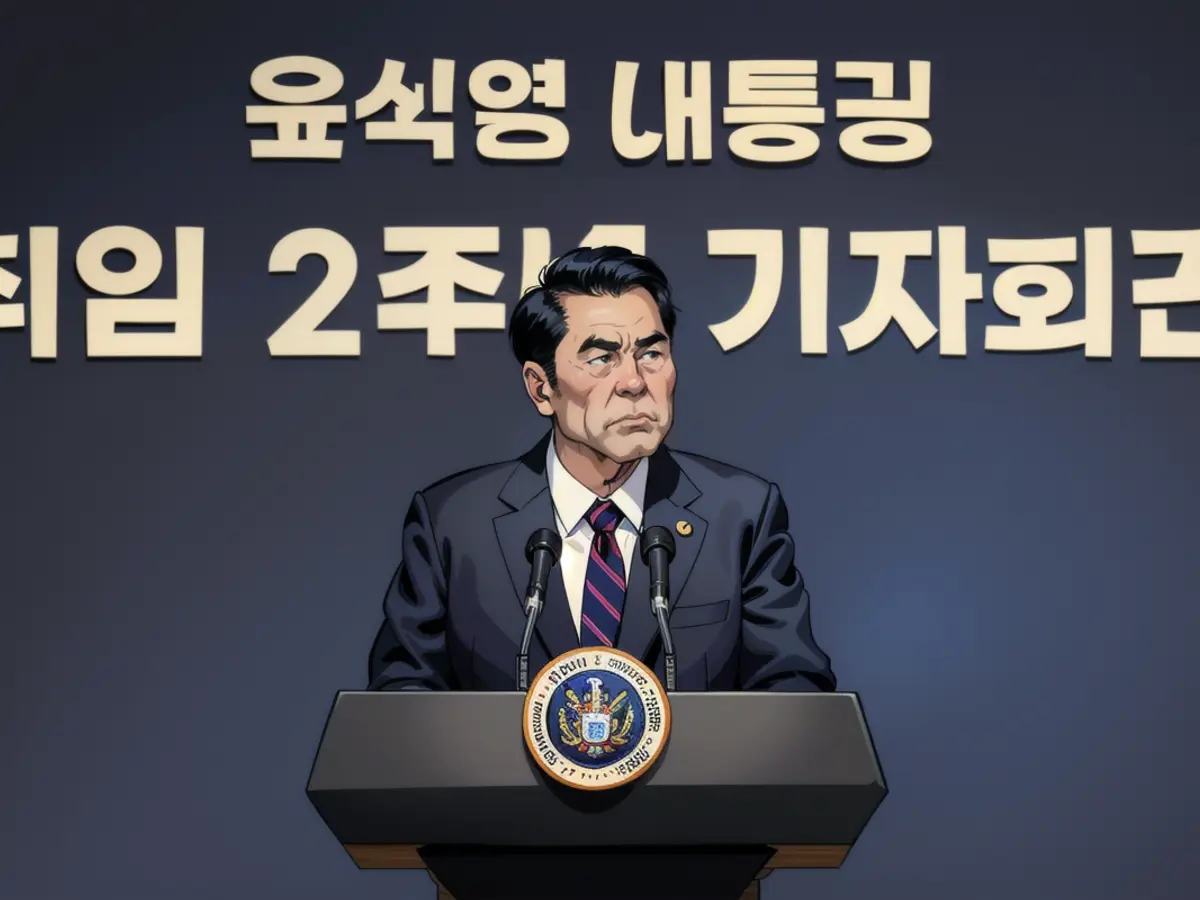Low birthrate in South Korea prompts president to establish a ministry for addressing the issue.
President Yoon Suk Yeol declared in a televised address that he will seek parliamentary support to create the Ministry of Counter-Measures for Low Birth Rates. He described the low birth rate as a national crisis that requires the nation's full resources to overcome.
During his first press conference since August 2022, Yoon acknowledged that his administration's attempts to enhance people's lives had been inadequate. He promised to use his remaining three years in office to improve the economy and address the low birth rate.
In 2023, South Korea experienced the world's lowest fertility rate, with a rate of 0.72 compared to 0.78 the previous year, marking yet another yearly decline. A fertility rate of 2.1 is required to maintain a stable population, but South Korea fell far short of this number.
The speed at which many East Asian countries are aging is causing alarm, as they industrialized rapidly just a few decades earlier. While several European nations also face aging populations, the effect is softened by immigration. South Korea, Japan, and China have avoided mass immigration in an attempt to maintain their working-age populations.
The causes of these demographic shifts vary across the region. Factors include difficult work cultures, stagnant wages, rising living costs, evolving attitudes toward marriage and gender equality, and growing dissatisfaction among younger generations.
Despite economic pressures, monetary interventions have been unsuccessful. Since 2006, over $200 billion has been spent in South Korea to improve the population count. Efforts like increased paid paternity leave, baby vouchers for new parents, and social initiatives to encourage men to participate in childcare and household chores have not reversed this trend.
Instead, experts and locals suggest that more fundamental social issues are to blame. For example, discrimination against single parents, prejudice against non-traditional unions, and barriers for same-sex couples are often cited.
Similar efforts have been made in Japan, where the government sought to motivate couples to have children, with no success. In January 2023, Japanese Prime Minister Fumio Kishida warned that the country was "on the verge of not being able to sustain basic social functions" due to the falling birth rate. He announced plans for a new government agency to study the problem.
This agency, the Child and Families Agency, was established a few months later to address various issues, such as kids' health and welfare, supporting families and parents, and creating an environment where couples feel hopeful about marriage, children, and childrearing, according to its website.
Measures such as improving childcare services, providing spaces for children to play and live, aim to tackle the low birthrate and foster a society where individuals feel optimistic about starting families.
Read also:
- This will change in December
- Dikes withstand water masses so far - Scholz holds out the prospect of help
- Fireworks and parties ring in 2024 - turn of the year overshadowed by conflicts
- Attacks on ships in the Red Sea: shipping companies avoid important trade route
South Korea's low birthrate is a concern not only within the country but also on a global scale, as it has the world's lowest fertility rate in 2023. This trend is also being observed in other Asian countries, highlighting a demographic shift in the region.
Source: edition.cnn.com







